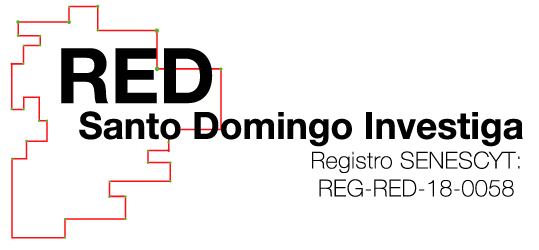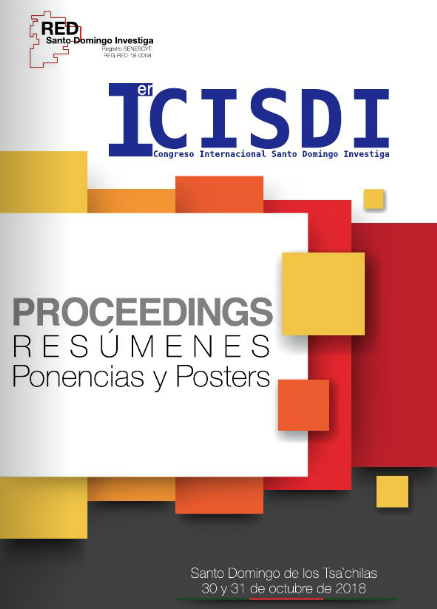Estudio morfológico y anatómico del orégano (Origanum vulgare) y determinación de su ingrediente activo para el control de la bacteria Escherichia coli.
Morphological and anatomical study of oregano (Origanum vulgare) and determination of its active ingredient for the control of the bacterium Escherichia coli.
Marjorie Basurto
Esta dirección de correo electrónico está protegida contra spambots. Necesita activar JavaScript para visualizarla.
Universidad de las Fuerzas Armadas "ESPE"
Angie Granja
Esta dirección de correo electrónico está protegida contra spambots. Necesita activar JavaScript para visualizarla.
Universidad de las Fuerzas Armadas "ESPE"
Ariana Quintero
Esta dirección de correo electrónico está protegida contra spambots. Necesita activar JavaScript para visualizarla.
Universidad de las Fuerzas Armadas "ESPE"
Andrés Velásquez
Esta dirección de correo electrónico está protegida contra spambots. Necesita activar JavaScript para visualizarla.
Universidad de las Fuerzas Armadas "ESPE"
Resumen
Las poblaciones del Ecuador, principalmente los niños y adultos con un sistema inmunológico débil son más propensos a enfermarse o intoxicarse mediante alimentos, consecuentemente infectando y causando daños al sistema digestivo. Este tipo de enfermedades frecuentemente son provocadas por bacterias. El uso de antibióticos de origen natural tales como los aceites esenciales, los cuales poseen una actividad antimicrobiana no específica resulta una opción factible para combatir enfermedades causadas por ciertas bacterias, como la Escherichia coli. En el presente estudio se analizó la morfología y anatomía del orégano (Origanum vulgare) y se determinó el ingrediente activo presente en mayor concentración en la planta para el control de la bacteria Escherichia coli. Se realizaron observaciones en las plantas de orégano (Origanum vulgare) usando un microscopio óptico y un estereomicroscopio, las cuales fueron obtenidas en la ciudad de Santo Domingo. Se extrajo el aceite esencial de las plantas por el método de destilación directa y por arrastre de vapor usando las hojas y tallo de 75 plantas de orégano. Se realizaron pruebas de susceptibilidad antimicrobiana utilizando el aceite esencial de las plantas de O. vulgare, amoxicilina y una muestra testigo. Se determinó que la mayor parte del aceite esencial del orégano se encuentra en las hojas. Con el método de destilación por arrastre de vapor se obtuvo la primera gota de destilado a los 41 minutos y con el método directo a los 36 minutos. Se obtuvo un remanente de 50 mL y 125 mL respectivamente. El carvacrol es el componente principal en el aceite esencial de orégano. En las cuatro cajas Petri que se realizó en la inhibición de la bacteria Escherichia coli se estableció que se vieron afectadas por la humedad fallando la determinación de inhibición del aceite de orégano. Se concluye que el mejor método práctico para la destilación del aceite es el directo, porque se obtuvo más remanente que usando el método por arrastre de vapor. Cabe resaltar que la mala práctica en laboratorio no permitió ver la inhibición de la bacteria, pues el exceso de humedad en las cuatro cajas Petrí impidió el adecuado cultivo de la bacteria.
Palabras claves: Aceite esencial, orégano, antimicrobiano, carvacrol, Escherichia coli.
Abstract
The populations of Ecuador, mainly children and adults with a weak immune system are more likely to become ill or intoxicated through food, consequently infecting and causing damage to their digestive system. These types of diseases are frequently caused by bacteria. The use of naturally occurring antibiotics such as essential oils, which possess non-specific antimicrobial activity, is a feasible option to combat diseases caused by certain bacteria, such as Escherichia coli. In the present study the morphology and anatomy of oregano (Origanum vulgare) was analyzed and the active ingredient present in greater concentration in the plant for the control of the bacterium Escherichia coli was determined. Observations were made on oregano plants (Origanum vulgare) using an optical microscope and a stereomicroscope, which were obtained in the city of Santo Domingo. The essential oil was extracted from the plants by the direct distillation and steam stripping method using the leaves and stems of 75 oregano plants. Antimicrobial susceptibility tests were performed using the essential oil of O. vulgare plants, amoxicillin and a control sample. It was determined that most of the essential oil of oregano is found in the leaves. With the steam distillation method, the first drop of distillate was obtained at 41 minutes and with the direct method at 36 minutes. A remnant of 50 mL and 125 mL respectively was obtained. Carvacrol is the main component in the essential oil of oregano. In the four Petri dishes that were carried out in the inhibition of the bacterium Escherichia coli, it was established that they were affected by moisture failing the inhibition determination of oregano oil. It is concluded that the best practical method for the distillation of the oil is direct, because more remnant was obtained than using the method by steam drag. It should be noted that the bad practice in the laboratory did not allow to see the inhibition of the bacteria, because the excess moisture in the four Petrí boxes prevented the proper cultivation of the bacteria.
Keywords: Essential oil, oregano, antimicrobial, carvacrol, Escherichia coli.


















